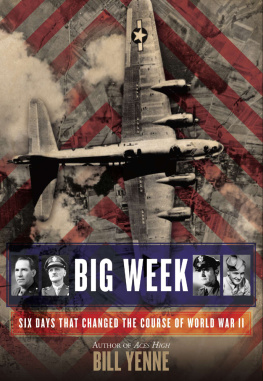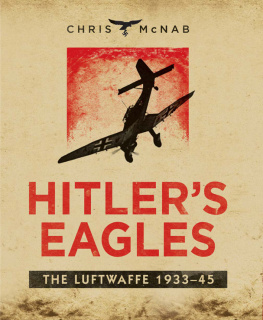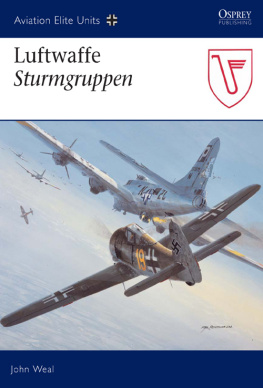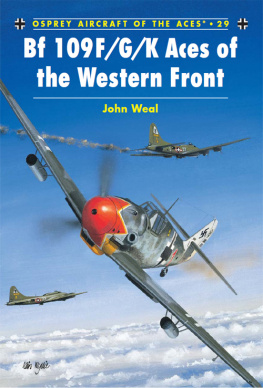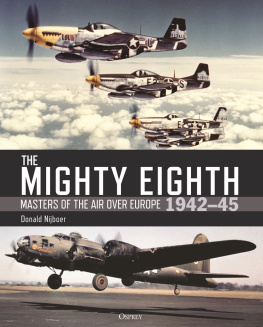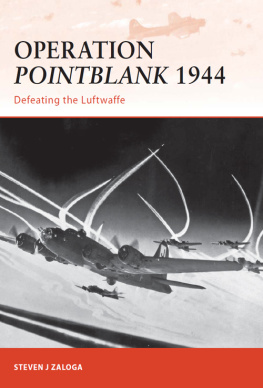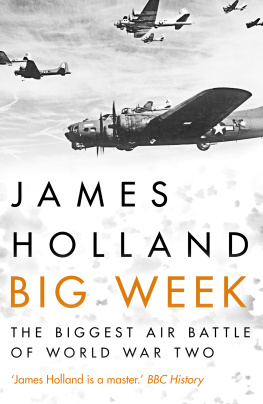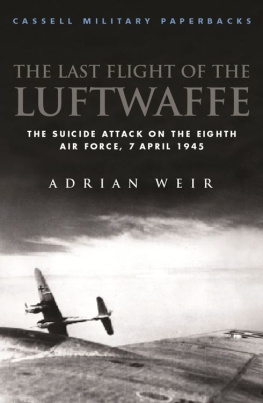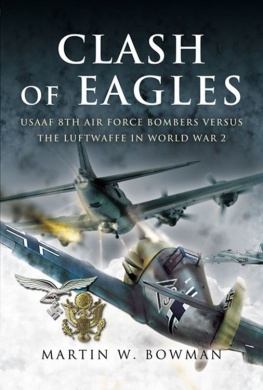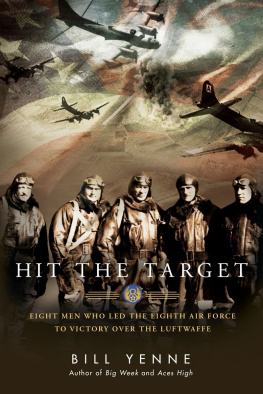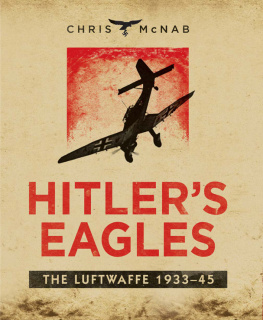BIG WEEK
Most Berkley Caliber Books are available at special quantity discounts for bulk purchases for sales promotions, premiums, fund-raising, or educational use. Special books, or book excerpts, can also be created to fit specific needs.
For details, write: Special Markets, The Berkley Publishing Group, 375 Hudson Street, New York, New York 10014.
BIG WEEK
SIX DAYS THAT CHANGED THE COURSE OF WORLD WAR II
BILL YENNE

BERKLEY CALIBER, NEW YORK
THE BERKLEY PUBLISHING GROUP
Published by the Penguin Group
Penguin Group (USA) Inc.
375 Hudson Street, New York, New York 10014, USA
Penguin Group (Canada), 90 Eglinton Avenue East, Suite 700, Toronto, Ontario M4P 2Y3, Canada
(a division of Pearson Penguin Canada Inc.) Penguin Books Ltd., 80 Strand, London WC2R 0RL,
England Penguin Ireland, 25 St. Stephens Green, Dublin 2, Ireland (a division of Penguin
Books Ltd.) Penguin Group (Australia), 707 Collins Street, Melbourne, Victoria 3008, Australia
(a division of Pearson Australia Group Pty. Ltd.) Penguin Books India Pvt. Ltd., 11 Community
Centre, Panchsheel Park, New Delhi110 017, India Penguin Group (NZ), 67 Apollo Drive,
Rosedale, Auckland 0632, New Zealand (a division of Pearson New Zealand Ltd.) Penguin Books,
Rosebank Office Park, 181 Jan Smuts Avenue, Parktown North 2193, South Africa Penguin China,
B7 Jaiming Center, 27 East Third Ring Road North, Chaoyang District, Beijing 100020, China
Penguin Books Ltd., Registered Offices: 80 Strand, London WC2R 0RL, England
This book is an original publication of The Berkley Publishing Group.
BIG WEEK
The publisher does not have any control over and does not assume any responsibility
for author or third-party websites or their content.
Copyright 2012 by American Graphic Systems, Inc.
Jacket design by Sharanya Durvasula
Jacket photo by Keystone (GettyImages)
ISBN: 978-1-101-61896-7
All rights reserved.
No part of this book may be reproduced, scanned, or distributed in any printed or
electronic form without permission. Please do not participate in or encourage piracy of
copyrighted materials in violation of the authors rights. Purchase only authorized editions.
BERKLEY CALIBER and its logo are trademarks of Penguin Group (USA) Inc.
First edition: January 2013
An application to register this book for cataloging has been submitted to the Library of Congress.

The week of 2026 February, 1944, may well be classed by future historians as marking a decisive battle of history, one as decisive and of greater importance than Gettysburg.
General Henry H. Hap Arnold,
Commanding General of the USAAF,
in his report to the Secretary of War, February 27, 1945
ACKNOWLEDGMENTS
The author would like to thank Colonel J. A. (Bill) Saavedra, USAF (Ret.) of the Office of Air Force History in Washington, DC, and Thomas P. Lauria of the Air Force Historical Research Agency at Maxwell AFB, both of whom provided an immense volume of research material. It is through them that I had access to information about the life of Archie Mathies, an inspiration to us all, and access to the memoirs of Richard DOyly Hughes, the most influential unsung hero in the story of Big Week and the events that led to it. Finally, the author wishes to thank Tom Colgan of Berkley Caliber, who made this book possible.
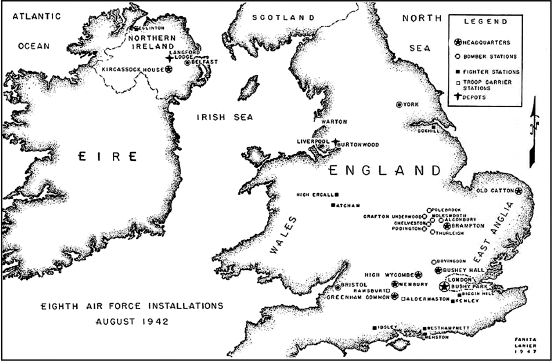
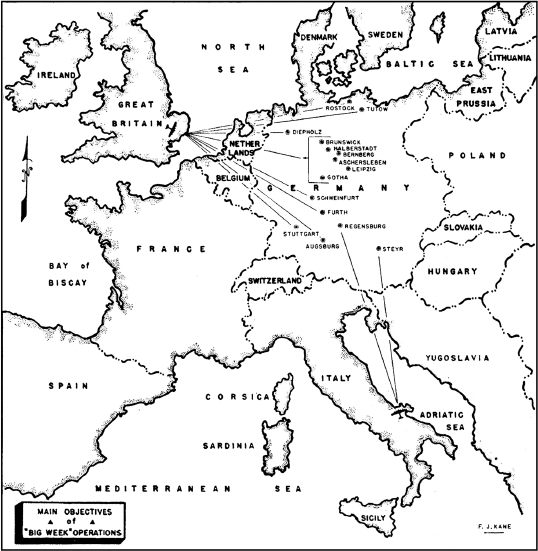
INTRODUCTION
On a blustery June day in 1944, Larry Kuter took an airplane ride. Far beneath him, one of the greatest military enterprises in world history, certainly one of the biggest in World War II, was unfolding. Down below, across a fifty-mile swath of the shores of Frances ancient province of Normandy, 156,000 Allied soldiers were going ashore to begin the great campaign to drive the German armies out of the nations of Western Europe they had occupied for the previous four years.
The Allied soldiers, including 57,500 Americans, came ashore in places with code names alien to those who actually lived in Normandyespecially Normandys newest residents, the Germans manning the artillery and the reinforced concrete fortresses. They came ashore on beaches named Sword, Gold, Juno, and Utah. At a fifth beach called Omaha, the Americans took it especially hard, chopped to pieces by heavy machine gun fire and shelling.
Allied planners aboard some of the five thousand ships that stood offshore in the English Channel, or in the various headquarters in Britain, were fixated on this great battle unfolding in surf and sand and rocky cliff.
However, Larry Kuters eyes were on the sky. As the Flying Fortress in which he was a passenger flew almost listlessly through the freezing air, his binoculars were trained not on the vast drama unfolding two thousand feet below, but on the eastern fringes of the great blue dome of sky.
He saw a cluster of airplanes at his own altitude, marked with the same white star as the B-17 in which he flew. He saw another cluster of airplanes beneath him, and their wings were marked with the roundels of Britains Royal Air Force.
The bomber diverted from overflying the channel and drifted inland over France, then back over the channel, crisscrossing the invasion beachesSword, Gold, Juno, Utah, and Omaha. Down there, Allied soldiers were being hammered relentlessly by a well-armed enemy, but up where Kuter scanned the skies, things were downright peaceful.
The sky was full of airplanes that day, but they were all friendly. It was not supposed to have been that way. Once, a very short time before, Germanys Luftwaffe had been the most powerful and effective air force in the world. Indeed, only a few months ago, Flying Fortress crews who ventured into the skies over Europe did so at considerable peril, knowing that the Luftwaffe maintained total air superiority in the skies across the continent.
Six months earlier, any Allied aircraft that ventured into continental airspace was liable to be pounced upon by a gaggle of angry Messerschmitts hurling 20mm explosive shells at the rate of seven hundred rounds per minute. Indeed, many Flying Fortresses like the one in which Kuter now rode had been turned into crumpled, falling piles of wreckage by those shellsand in these skies. Dozens of times, the floors of these Flying Fortresses, like the floor beneath Kuters feet, had been covered with pools of American blood because of the Luftwaffe.
Four years earlier, when Adolf Hitlers legions had swept across Europe, defeating nations as powerful as France in a matter of weeks, they had done so beneath an umbrella of airpower that attacked and pounded Germanys enemies into submission. Nothing moved on the ground but that it was seen from above and strafed by a Messerschmitt or bombed by a Stuka.
This was the fear that had haunted Allied planners when they imagined the great battle now taking place in Normandy. It had kept them awake at night, and it had caused chills to run up their spines and nest in the bases of their skulls like icy rodents.

